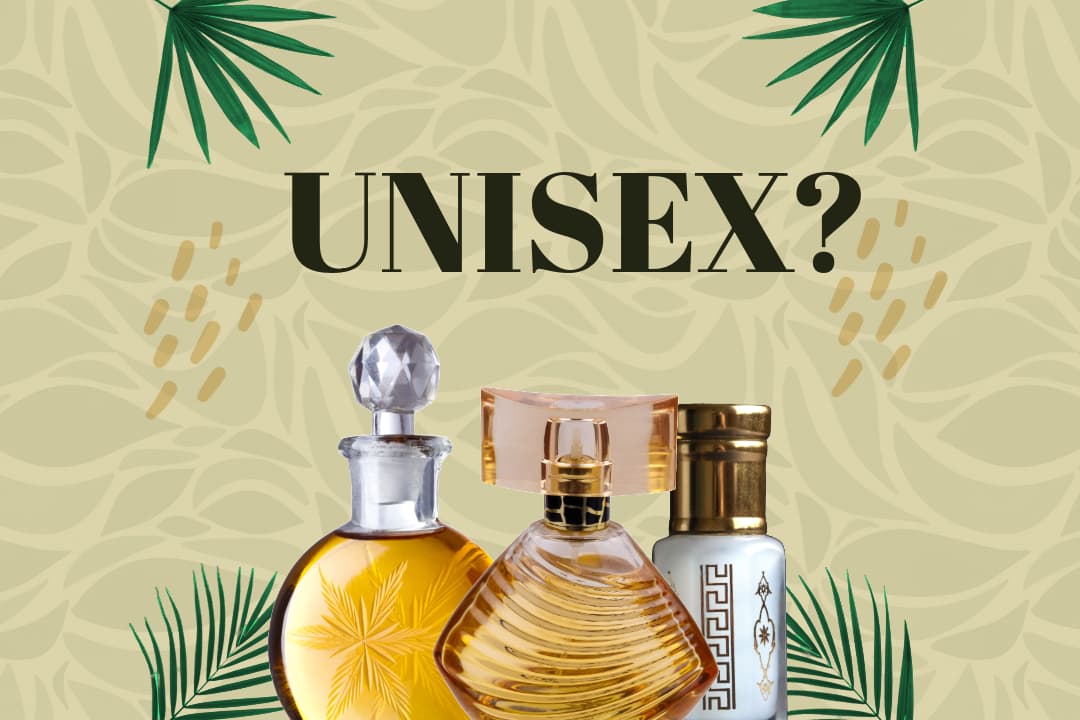
Does Scent have a Gender?
We the DyasporaShare
Scent is a deeply personal experience—so why do we insist on assigning it a gender? The idea that certain fragrances are "for men" and others are "for women" has been pushed for decades, mainly by the fragrance industry. But when you strip away the marketing and cultural baggage, does it really make sense to categorize scents by gender? The short answer: not really.
The History of Gendered Scents
Fragrance wasn’t always divided along gender lines. Historically, perfumes were used by everyone regardless of gender, especially in ancient Egypt and the Roman Empire. Scents like rose, lavender, and myrrh were enjoyed by all. It wasn’t until the late 19th and early 20th centuries, when modern marketing and capitalism started to shape consumer behavior, that companies began pushing the idea that certain scents were masculine and others feminine.
So, where did this gender division come from? It’s largely a product of branding. In the mid-1900s, the fragrance industry began to create distinct categories: floral and sweet for women, woody and spicy for men. This binary approach had less to do with the actual scent profiles and more with cultural norms of what was deemed “appropriate” for each gender. Fast forward to today, and we’re still wrestling with the impact of those marketing decisions.
Fragrance Notes and Gender Stereotypes
Traditionally, certain fragrance notes have been associated with masculinity or femininity. For example:
- Floral notes (rose, jasmine, lily) are considered “feminine.”
- Woody and spicy notes (sandalwood, cedar, pepper) are considered “masculine.”
But why? If you think about it, there’s nothing inherently “feminine” about a rose or “masculine” about cedar. These associations are entirely arbitrary, shaped by societal expectations rather than anything biological or scientific.
Looking at scent preferences across different cultures also challenges these stereotypes. In some Middle Eastern countries, for instance, men often wear fragrances with heavy floral notes like rose and oud, while in the West, those same scents are deemed feminine. This disparity shows that gendered scent categories are largely culturally constructed and are more about social conditioning than anything innate.
How Marketing Reinforces Gender Norms
A massive part of why people continue to associate certain fragrances with a specific gender is due to marketing. Fragrance companies push the narrative through packaging, branding, and advertising. Men’s colognes are often sold in darker, more "rugged" bottles, while women’s perfumes come in delicate, ornate packaging. Look at any fragrance ad, and you’ll see gender norms on full display: muscular men in tailored suits, women in glamorous gowns. The industry plays into these outdated ideas because they’re profitable.
But this binary is limiting. It assumes that men want to smell a certain way and women another, ignoring the fact that personal taste is, well, personal. Some men love floral scents. Some women prefer smoky, woody fragrances. Why should they be confined by labels?
Unisex and Gender-Neutral Fragrances
In recent years, there has been a shift toward unisex or gender-neutral fragrances. Brands like Le Labo, Byredo, and Maison Margiela have pioneered this movement by creating scents that are marketed to everyone. This trend reflects a growing acknowledgment that scent is subjective and personal—why should it be boxed into a “for him” or “for her” label?
Even more traditional brands are jumping on the unisex bandwagon, offering fragrances that avoid being overtly gendered. But there’s still a long way to go. Many mainstream brands continue to lean heavily on gendered marketing, perpetuating the idea that certain notes should only be worn by one gender.
Dyaspora, for example, pushes boundaries by offering customizable scents that allow individuals to craft a fragrance that reflects their multifaceted identity—without the confines of gendered categories. This personalized approach is where the future of fragrance should be headed: celebrating individuality, not fitting people into boxes.
The Science Behind Scent and Perception
Is there any scientific basis for assigning gender to certain scents? The short answer is no. When it comes to scent perception, studies show that both men and women enjoy a wide range of fragrances, from floral to woody to spicy. Our olfactory senses don’t inherently categorize smells by gender; it’s something we’re taught.
In fact, the human nose doesn’t perceive scent with gendered bias—it responds to the chemicals present in the fragrance. Research shows that our perception of scent is influenced more by memory and personal experience than by anything tied to our gender. That’s why a scent that reminds you of your grandmother’s garden may seem comforting to one person but overwhelming to another.
Breaking Free from Gendered Scents
So, where do we go from here? We need to start by challenging the assumptions we’ve been taught. The next time you’re choosing a fragrance, don’t let marketing dictate what you should like based on your gender. Pick what resonates with you, what makes you feel good. Whether that’s a smoky vetiver or a delicate rose, it doesn’t matter. It’s your scent.
The push for unisex fragrances is a step in the right direction, but there’s still work to be done in dismantling the gender binary in the fragrance world.
The Future of Fragrance is Gender-Free
The future of fragrance should be about choice, personalization, and breaking free from gender constraints. The days of labeling scents as “for men” or “for women” are numbered, as more consumers demand products that reflect their individuality rather than fitting them into outdated gender norms.
As we move away from these rigid categories, we’ll see more room for creativity and self-expression in the world of fragrance. And when it comes to choosing a scent, let’s stop asking whether it’s masculine or feminine, and start asking whether it’s you.
